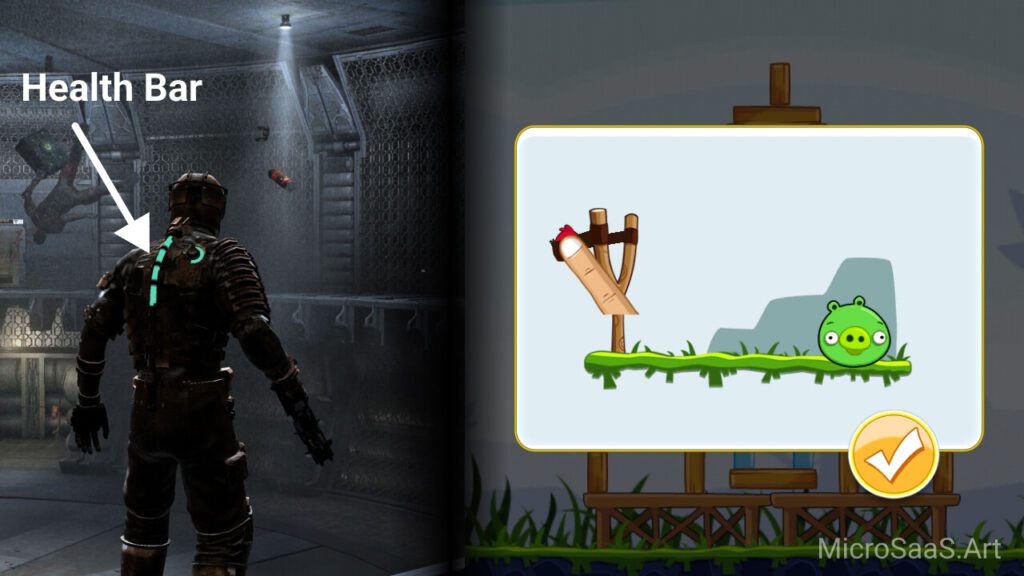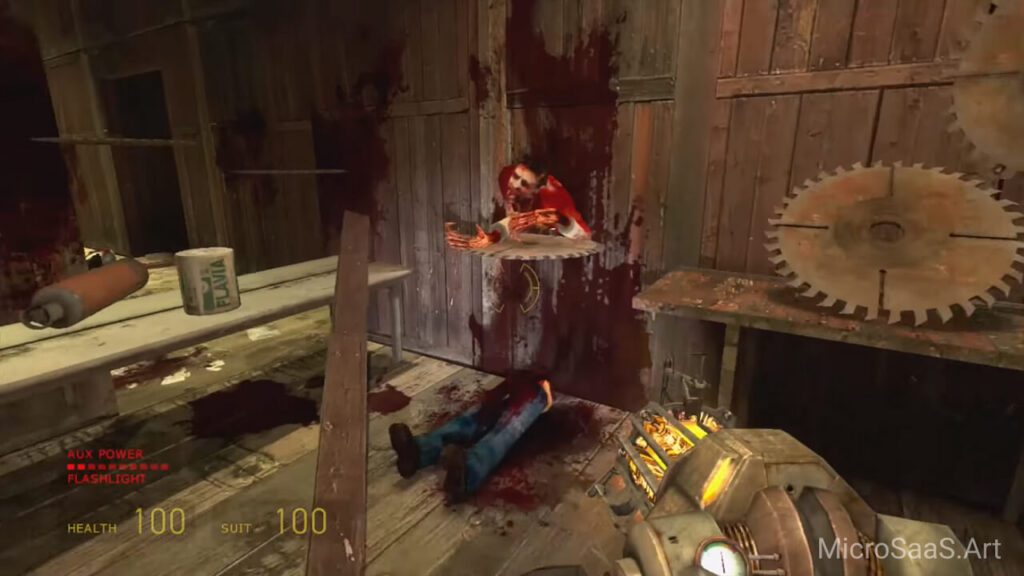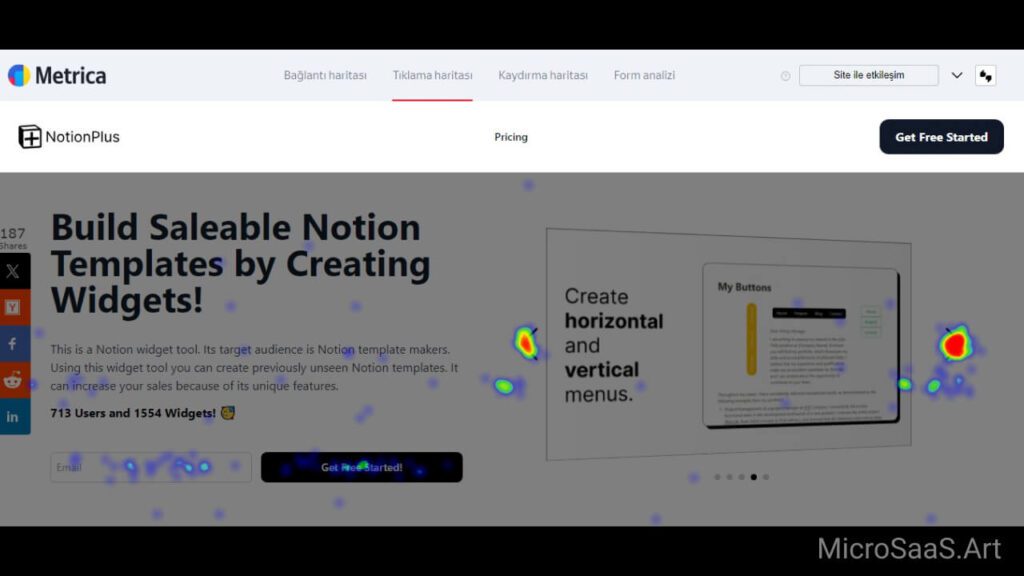Today, I’m here to explain what Valve calls our “secret weapon” and how we can use it in our Micro SaaS products. With this technique and even with this strategy, they developed games such as the world-famous Portal, CS:GO, and Half-Life.
So how can we use this technique in our small products? And if we do, what kind of results will we get? I’m Ugur, welcome to MicroSaaS.Art. Don’t forget to share this article on Twitter!
When Valve developed Portal and gave it to testers to play, they got an unexpected response.
“The tutorial was great, I can’t wait to play the full game.”
This was a nightmare for Valve because that’s all there was to the game, so it wasn’t a demo! But players thought it was a demo.
There was a lot of brainstorming at this point. Valve decided that the game needed an antagonist. An antagonist opposes, fights, or competes with another person; a rival; or an enemy. The game needed an antagonist. As a result, GLaDOS was born.
GLaDOS was the game’s main enemy and was an artificial intelligence that could mock the player’s intelligence. Since the game was difficult, its solution would be difficult and in this way, it would give motivation to the player to finish the game. By having an enemy, the game would have a story.
GLaDOS has become one of the most iconic gaming characters in the history of the world. The genesis of this character came from players’ reactions to the dynamics of the game.
Valve’s Secret Weapon: Playtesting
The game uses a technical strategy called playtesting. Do not think of it as testers. Testers are people who find and report bugs in the game. Playtesting is a completely different thing.
What is a Playtesting?
Playtesting is a team that monitors users playing the game. They take note of the player’s reactions to the game. They see where they have difficulty. In this way, they can detect basic mechanical problems or boredom as soon as possible. This increases the pleasure of the game.
For example, if the player is placing portals in the wrong places and can’t get close to a solution, Valve prevents portals from being placed on the floor or walls at the player’s height. Since the player cannot place portals on the floor and the walls next to it, they are forced to place them farther away and on points such as the ceiling. This can be done without showing the players who cannot solve for hours in the game and who are bored with it by putting it in their eyes.
This is a very magical technique. With an intuitive design, you can make the player do the actions they need to do. Teaching the game by using zero “0” text in AngryBirds or the character texturing that allows you to see the health of the game character without adding a health bar on the screen in DeadSpace is just an example.

Valve did all this by repeatedly watching players play parts of the games without breaking the game’s dynamics, taking away from the story, or boring the player.
Playtesting even inspired the theme of the game. The beta test of the game started in an old-fashioned building. Players had a hard time finding key objects in the game. For example, one player spent an hour trying to push a shelf onto a button. But he didn’t think to use the box next to it.
“One of our secret weapons so far has been playtesting”
Gabe Newell, Valve
Valve is doing an incredible amount of playtesting. One of their employees even said he never thought it would be this much.
They do the test on Friday. On Sunday they discuss the results. They'd reorganize it for the rest of the week and test it again on Friday.
It was the same with HalfLife. There was very little time left before the release of the game, but there were many bugs and inconsistencies in the game. The solution was to remake the game. But while doing this, they adhered to 2 basic philosophies. Cabal and Playtesting.
What is a Cabal Model?
Cabal was a method where developers were divided into multi-disciplinary teams and each team took full responsibility for a certain part of the game.
In Playtesting, any bad situation was immediately detected.
In this way, Valve found random players to play HalfLife and analyzed their gameplay. This identified dozens of problems. Some of these were things that should have been removed from the game. Others were things that needed to be added to the game.
For example, when they saw that players were constantly breaking boxes with crowbars, they decided to add rewards to the boxes.
With this strategy, Valve made one of the best games of all time. With the momentum of HalfLife, Steam was founded and evolved into the largest game distribution platform in the world.
Another example is that in HalfLife, although they thought to give the gravity gun at the end of the game, they decided to add it to the beginning of the game because the players liked the gun so much. They didn’t tell new players that it was a gravity gun in writing. This is related to the intuitive design I told you about. There was a man cut in half and underneath him was the thing that cut him in half. When the players saw that, they could automatically understand what this tool was about. With the environmental design, instead of telling him by writing or speaking, it was telling him in a completely different way. That’s why I say it’s fascinating, it’s like reading someone’s mind!

Even in HalfLife Alyx, VR decided to increase the speed of the game when they noticed that players were not listening to the dialogues in the game. That’s how important playtesting is!
Adapting the Valve’s Secret Weapon Formula in Product Development
You know this secret weapon formula by now. You can’t pretend you don’t. What kind of strategy can small teams or entrepreneurs use when they want to do this? How can we get results if we apply it? And how do we do this whole process? That’s the most important question. How are we going to do it? I have a few ideas for this.
How Micro SaaS Founders Can Use Playtesting?
We cannot go and watch every user using the product. But we can use tools that can do this. Hotjar or Yandex Metrica are perfect for this. It has tools that allow you to track which page users go to and, most importantly, their mouse movements.
Sign up, copy the code, paste it on your site, and let your users use it!

It’s a simple approach, but if you have a Micro SaaS product with more than 800 members like me, tracking hundreds of account transactions is like signing your death warrant.
At this point, we can use A/B testing mechanics.
- Create pages that only certain users can see. This is quite easy to do.
- For example, you want to switch to a new design or add a new button for the user.
- Instead of publishing it to everyone, find the IDs of random users from your database.
- And determine with “if else” that only these IDs will see this button or feature.
- Of course, paste the code from Hotjar or Yandex Metrica on the pages they can see.
In this way, you will only see their actions! Isn’t it great? 🙂
